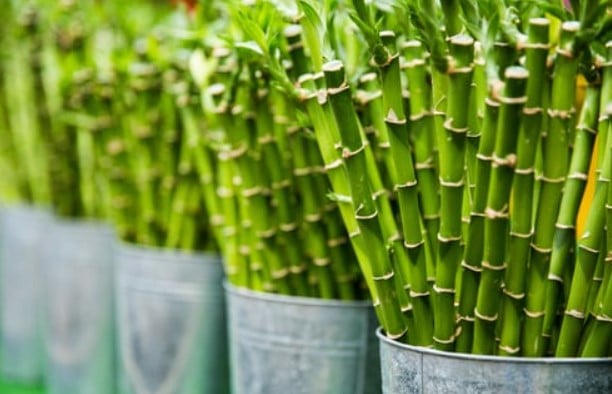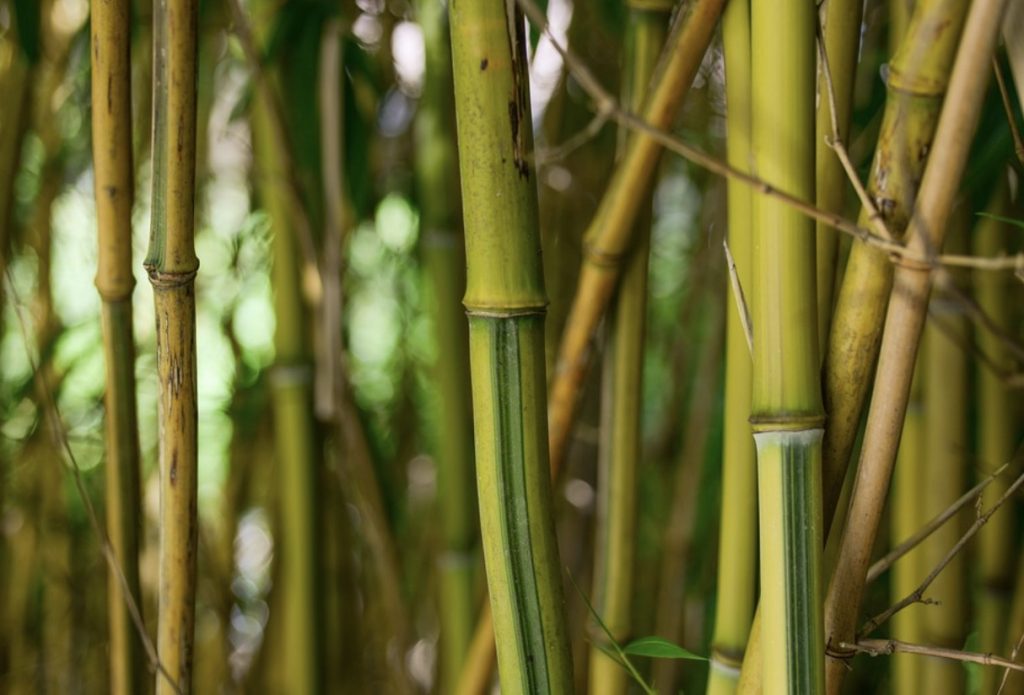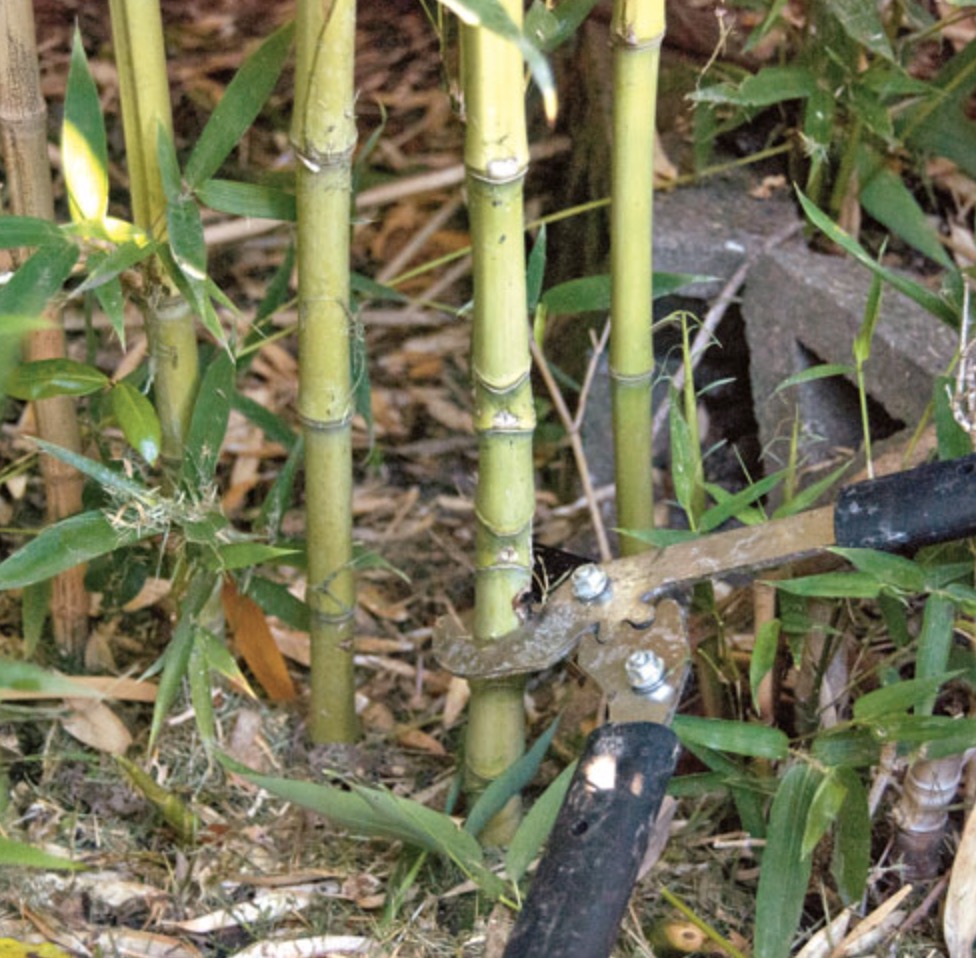Bamboo is a fast-growing and low-maintenance plant that has become increasingly popular in recent years. One of the most exciting things about bamboo is its ability to propagate, meaning you can grow new plants from existing ones. Clumping bamboo, in particular, is easy to propagate and can quickly fill out a garden or landscape.
To propagate clumping bamboo, start by selecting healthy parent plants with well-established root systems. You’ll want to choose a section of the plant that includes several culms (stems) as well as some rhizomes (roots). Cut this section away from the parent plant using pruning shears or a handsaw. Next, prepare a pot or container with fresh potting soil and place the cut section into it, making sure the rhizomes are buried under the soil.

Propagate Clumping Bamboo
Clumping bamboo can be propagated by division or by culm cuttings. Here are the steps to propagate clumping bamboo using both methods:
- Division:
- Wait for spring or early summer, when the bamboo starts to produce new shoots.
- Select a healthy clump of bamboo and dig it up carefully, trying to preserve as many roots as possible.
- Use a sharp spade or saw to divide the clump into smaller sections, each with several culms and a good root system.
- Make sure that each section has at least one vigorous shoot emerging from the soil.
- Plant each section in a new hole that has been prepared in advance, and water thoroughly.
- Culm Cuttings:
- Select a healthy, mature culm of bamboo that is at least 1 year old.
- Using a sharp saw, cut a section of culm that is about 1 foot long.
- Cut the bottom end of the culm at an angle to expose the inner tissue.
- Place the culm cutting in a container filled with water or damp sand, making sure that the angled end is submerged.
- Place the container in a warm, shaded area and change the water or sand regularly to prevent stagnation.
- After a few weeks, the cutting should start to develop roots.
- Once the roots are well-developed, plant the cutting in a new hole that has been prepared in advance, and water thoroughly.
Note that propagation by division is usually more reliable and produces stronger plants, while propagation by culm cuttings may take longer and produce weaker plants. It’s also important to choose the right bamboo species for your climate and growing conditions, as some types of bamboo may be invasive and difficult to control.
Understanding Clumping Bamboo
Clumping bamboo is a type of bamboo that grows in a clump or tight cluster rather than spreading out through runners like running bamboo. The culms or stems of clumping bamboo grow upright from a central rhizome or root system, and they usually grow closer together than those of running bamboo.
Clumping bamboo is generally considered to be less invasive than running bamboo, as it does not spread aggressively and is easier to control. However, it still needs to be planted with care, as some species of clumping bamboo can still spread over time and become difficult to contain.
Clumping bamboo can be grown in a variety of climates and soil types, but it prefers well-drained soil and plenty of moisture. It can also tolerate some shade, although it usually grows best in full sun. Clumping bamboo is prized for its ornamental value, as it can add a tropical feel to a garden or landscape. It can also be used as a screen or hedge, as the tall, dense culms can provide privacy and shade.
There are many species of clumping bamboo, each with its own unique characteristics and growing requirements. Some popular species of clumping bamboo include Bambusa, Fargesia, and Chusquea. It’s important to research the specific species of clumping bamboo you plan to grow to ensure that it’s well-suited to your climate and growing conditions.
Supplies Needed
The supplies needed to grow clumping bamboo depend on the method of propagation and the intended planting location. Here are some general supplies you may need:
- Soil: Clumping bamboo prefers well-draining soil that is rich in organic matter.
- Fertilizer: Clumping bamboo requires regular fertilization to thrive. You can use a balanced fertilizer or a specialized bamboo fertilizer.
- Water: Clumping bamboo needs regular watering, especially during the first few years of growth.
- Garden tools: You will need a shovel, rake, and pruning shears to prepare the planting site and maintain the bamboo.
- Mulch: A layer of mulch around the base of the bamboo can help retain moisture and prevent weeds from growing.
- Container or potting mix (for culm cuttings): If you are propagating clumping bamboo using culm cuttings, you will need a container filled with water or damp sand and a suitable potting mix for planting the rooted cuttings.
- Division tools (for division propagation): If you are propagating clumping bamboo through division, you will need a sharp spade or saw to divide the clump into smaller sections.
- Bamboo stakes or supports (optional): Some species of clumping bamboo can grow very tall, so you may need to provide support for the culms to prevent them from bending or breaking in strong winds.
It’s important to research the specific requirements of the species of clumping bamboo you plan to grow to ensure that you have all the necessary supplies and that your planting site is well-suited to the bamboo’s needs.
Planting Steps
Here are the general steps for planting clumping bamboo:
- Choose a suitable planting location: Clumping bamboo prefers a sunny location with well-draining soil that is rich in organic matter. Avoid planting near buildings, as the tall culms can cause damage during high winds.
- Prepare the planting site: Clear the planting site of any weeds or debris, and dig a hole that is twice as wide and as deep as the root ball of the bamboo. Mix in some compost or well-rotted manure to improve the soil’s fertility.
- Plant the bamboo: Gently remove the bamboo from its container or loosen the root ball of bare-root bamboo. Place the bamboo in the hole, making sure that the top of the root ball is level with the surrounding soil. Backfill the hole with soil and gently tamp it down around the base of the bamboo.
- Water thoroughly: Water the bamboo thoroughly to settle the soil around the roots and provide moisture. Keep the soil evenly moist, but not waterlogged, during the first few weeks of growth.
- Apply fertilizer: Apply a balanced fertilizer or a specialized bamboo fertilizer according to the manufacturer’s instructions. Repeat every 4-6 weeks during the growing season.
- Mulch the base: Apply a layer of mulch around the base of the bamboo to retain moisture and prevent weed growth. Leave a small gap around the base of the culms to prevent moisture buildup and rot.
- Provide support (optional): If your clumping bamboo is a tall variety, you may need to provide support for the culms to prevent them from bending or breaking in strong winds. Bamboo stakes or trellises can be used for this purpose.
- Prune as necessary: Prune any dead or damaged culms as needed, and remove any shoots that appear outside of the desired planting area. Pruning can be done in late winter or early spring.
Remember to research the specific requirements of the species of clumping bamboo you plan to grow to ensure that you provide the proper care and maintenance for optimal growth and health.
Caring for Clumping Bamboo
Caring for clumping bamboo is relatively simple, but it requires consistent attention to ensure that the bamboo remains healthy and attractive. Here are some tips for caring for clumping bamboo:
- Watering: Clumping bamboo requires consistent moisture to thrive, especially during the first few years of growth. Water deeply and regularly during dry periods, but avoid over-watering, which can cause root rot.
- Fertilizing: Apply a balanced or specialized bamboo fertilizer every 4-6 weeks during the growing season to provide the necessary nutrients. Avoid fertilizing in late fall and winter, when the bamboo is dormant.
- Mulching: Apply a layer of organic mulch around the base of the bamboo to retain moisture, suppress weed growth, and improve soil health. Leave a small gap around the base of the culms to prevent moisture buildup and rot.
- Pruning: Prune any dead or damaged culms in late winter or early spring to improve the appearance and health of the bamboo. Remove any shoots that appear outside of the desired planting area, as they can spread and become invasive.
- Controlling pests and diseases: Clumping bamboo is relatively resistant to pests and diseases, but it can be susceptible to aphids, spider mites, and bamboo mite. Monitor the bamboo regularly for signs of infestation and treat as necessary with insecticidal soap or neem oil.
- Controlling spread: While clumping bamboo is less invasive than running bamboo, it can still spread over time and become difficult to control. Use a rhizome barrier or root pruning to prevent the bamboo from spreading beyond its desired planting area.
- Winter protection: In areas with cold winters, protect the bamboo from freezing temperatures by covering it with a layer of mulch or burlap. Water the bamboo deeply before the ground freezes to ensure that it has enough moisture to survive the winter.
By following these care tips, you can enjoy healthy and beautiful clumping bamboo in your garden or landscape for years to come.
Harvesting Clumping Bamboo
Clumping bamboo can be harvested for a variety of purposes, including construction, crafts, and culinary uses. Here are some tips for harvesting clumping bamboo:
- Choose mature culms: Select culms that are at least 3-4 years old and have a diameter of 1-2 inches. Younger culms are not as strong or durable and should be left to mature.
- Cut at the base: Use a saw or pruning shears to cut the culm at the base near the soil line. Make a clean cut at a slight angle to prevent water from pooling on the cut surface.
- Remove branches and leaves: Strip the branches and leaves from the culm, leaving only the smooth, straight section. This will make the culm easier to handle and less prone to splitting or cracking.
- Dry and cure the bamboo: Allow the harvested culms to dry in a well-ventilated area for several weeks to remove moisture and prevent mold growth. Once the bamboo is dry, store it in a dry, cool place until ready for use.
- Dispose of waste properly: The leaves, branches, and other parts of the culm that are not used can be composted or used as mulch. Do not dispose of the waste in natural areas or waterways, as it can be invasive.
When harvesting clumping bamboo, be sure to only take what you need and leave enough culms to ensure the continued health and growth of the plant. Avoid over-harvesting, which can weaken the bamboo and make it more susceptible to pests and diseases.
Conclusion
Clumping bamboo is a versatile and attractive plant that can add beauty and interest to any garden or landscape. With the right planting, care, and harvesting techniques, you can enjoy healthy and beautiful clumping bamboo for years to come. Remember to choose the right species, prepare the planting area properly, and provide consistent water, fertilizer, and mulch. Regular pruning and pest control can also help keep the bamboo healthy and attractive. And if you decide to harvest the bamboo for construction, crafts, or culinary uses, be sure to follow the proper techniques to ensure a successful and sustainable harvest.
Help Us! Share on:








